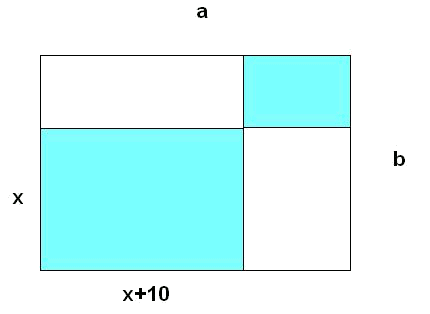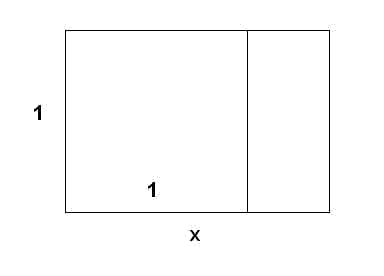When mathematics introduced algebra and polynomials, they did not think they would be such useful tools for solving many problems.
Example
Consider the following figure:

Let
If we know that the colored area is half the area of the entire rectangle, find a polynomial that expresses the above mentioned relation. Use it to solve (i.e., find the value of
The area of the big rectangle is
And the colored area is formed by two rectangles:
Therefore, we must impose:
To find a polynomial we develop the previous equation:
We already have the polynomial that we were looking for. Now we consider the particular case of
The solutions of the equation are:
And the only one that makes sense geometrically is the second one with
Example
A football field has unknown dimensions. Nonetheless, a maintenance worker tells us that the relation between the width minus
We will use variable
Example
Demonstrate that if the square of the sum two numbers is equal to the sum of the squares of the stated numbers, one of these numbers is zero.
We will denote by
Example
Let's consider a rectangle to be that of the figure below:

If we know that the quotient between the height and the width is equal to the value of the width minus one, find the value of the width of the rectangle.
We identify, as in the figure, the width with the variable
Obviously, we take the positive solution since the negative one does not make sense.
Therefore, the length of the rectangle is
Finally, it is worth knowing that the solutions to the equation seen in this example are called the Golden Number, a value that has many different mathematic and historical curiosities as well as very interesting properties.
